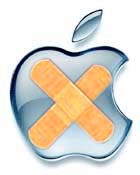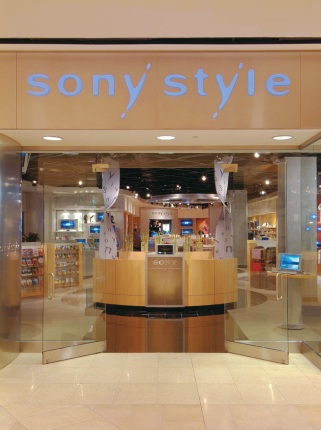 Last Spring, I wrote about opportunities for improving your brand by focusing on the customers experience in areas that may not be directly under your control. The main point of the post was that what the customer sees as the total experience may be broader that what you think it is. It doesn’t matter if the customer encounters a problem outside of “your” area of responsibility; to them it’s still part of the overall experience and can reflect poorly on your brand. These experience extensions are often delivered by third parties who don’t necessarily have the same customer objectives as you, but sometimes, inconsistent customer experiences can be due to a problem internal to an organization. A recent personal experience with Apple makes for a good case study.
Last Spring, I wrote about opportunities for improving your brand by focusing on the customers experience in areas that may not be directly under your control. The main point of the post was that what the customer sees as the total experience may be broader that what you think it is. It doesn’t matter if the customer encounters a problem outside of “your” area of responsibility; to them it’s still part of the overall experience and can reflect poorly on your brand. These experience extensions are often delivered by third parties who don’t necessarily have the same customer objectives as you, but sometimes, inconsistent customer experiences can be due to a problem internal to an organization. A recent personal experience with Apple makes for a good case study.
Apple excels at designing great technology experiences. They completely dominate the portable media player market. They have redefined what a cell phone is and sales of Mac computers is growing faster than any other brand in the US driven by a highly effective and popular ad campaign.
Apple has also done an amazing job expanding from a technology manufacturer to a retail powerhouse. On average, Apple stores generate over $4000 per square foot per year. That more than four times what Best Buy produces. Apple has invested heavily in creating a retail shopping experience which is both innovative and compelling.
This Christmas, I was compelled to purchase a MacBook as a present for my daughter. The sales experience was simple and fast and I walked out feeling really good about the purchase. My daughter, who loves to create and publish videos, was thrilled with her new computer. That is until it died five days after Christmas.
I was a little surprised. This was after all, a Mac. They’re better than PCs; they just work, right? In fairness, all technology products have their share of defects and from my research, Apple makes some of the most reliable computers on the market, so I don’t think this failure is indicative of a general quality problem. My first response was to go to Apple’s website to see if it held any information about the series of beeps that we got trying to boot. Surprisingly, I didn’t find any there. I then checked Google and quickly discovered that the beeps indicated that the RAM wasn’t being detected.
I spent the next hour and a half on the phone with about an hour of that time being on hold. The tech that I was working with could not diagnose the problem and kept putting me on hold to consult with product managers. He eventually sent me to one of those project managers who, after twenty more minutes on hold, told me that I had (surprise) a memory problem. I’m no “genius”, but 90 minutes to tell me what I already knew doesn’t seem very smart. The product manager then told me that he would give me an address where I could ship the computer to be repaired. That came as an unexpected and downright irritating surprise….
WHAT!?!? It’s only five days old, it’s dead and you want me to ship my daughter’s new Christmas present off for a couple of weeks to be repaired?? I’m thinking, “How does this experience support the Apple brand?”
OK I didn’t say any of that, but I did ask if I couldn’t simply take it back to the store. The product manager responded (and I’m not making this up) “Yeah, you could try that. They might have some extra memory laying around”.
I told him that I wanted to try that option first. Having previously dealt with a defective iPhone, I knew that I would have to make an appointment or risk waiting at the store for a few hours on standby. With my iPhone, AppleCare made the appointment for me so I asked the product manager if he could schedule an appointment for the computer. He responded by telling me that I could only schedule appointments for the current day since I had not paid the $99 fee that gives me the right to preferential treatment. Apparently my $250 extended warranty doesn’t get me any preferential treatment like it does at other CE retailers. Given that it was after store hours on Sunday, he told me that I would have to try to make the appointment myself early the next day.
On Monday morning, I went to Apple’s website at 7:30 am only to be informed that my store didn’t have any availability. At 10:00, I called the store to see if I could get an appointment, but the recorded message told me that they are unable to schedule appointments over the phone. The only option for tech support was to transfer me back to AppleCare. I did that hoping that they could possibly schedule stand-by appointments. No such luck as the AppleCare people could only see the same screen that I saw.
Finally after investing over two hours in this process, I got in the car and drove to the store with the dead MacBook. Entering the store, I was immediately approached by a very helpful employee who was able to get me scheduled with a genius in about 20 minutes. I told her about the problems I was having trying to schedule the appointment and she told me I “could have just pressed 5 when I called the store and they could have scheduled me over the phone.” (Doh…) I started to explain that the recorded message said otherwise, but just let it go.
Thirty minutes later, the problem had been diagnosed as both bad memory and a bad disk drive. I ended up getting all the personal data and software loaded to a new machine.
So here’s how I perceive the Apple brand based on this experience:
- The user experience design for Apple’s technology is excellent.
- Apple’s in-store retail customer experience both before and during the sale was excellent.
- The AppleCare phone support experience was terrible on several counts.
- Apple Retail’s in-store tech team was highly responsive and deserves the credit for salvaging a bad experience.
Apple, like many organizations, operates a number of divisions who each contribute to the success of the business. When all of those divisions are equally focused on delivering great customer experiences, the brand image is enhanced. But when one or more don’t deliver a great experience, the brand is diminished.
Make a point to regularly examine all of your customer experience touchpoints to ensure that they are consistently deliver experiences that enhance your brand. Then act quickly to turn those deficiencies into opportunities for enhancing your brand image.


 Its been a while since I wrote critically of Sony, but a
Its been a while since I wrote critically of Sony, but a 
 It was bad enough that ,when given the first opportunity to be the exclusive carrier for Apple’s new iPhone, Verizon turned it down. Now, Verizon’s President and COO Denny Strigl has gone on record as saying,
It was bad enough that ,when given the first opportunity to be the exclusive carrier for Apple’s new iPhone, Verizon turned it down. Now, Verizon’s President and COO Denny Strigl has gone on record as saying,
 Shaun Smith over at The Perfect Customer Experience has a
Shaun Smith over at The Perfect Customer Experience has a  While
While